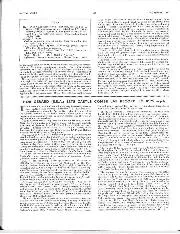
Bob Gerard (E.R.A.) Sets Castle Combe Record To 86.25 m.p.h.
The Bristol M.C. & L.C.C. ran off some very interesting races at their Castle Combe Meeting on October 4th. The race commentaries were given by W. G. Kay, who did an…
Corvette’s next-generation Le Mans challenger will mark a huge departure from the American firm’s tradition by becoming mid-engined.
Since Corvette began in the 1950s its cars have abided by a few main principles: have a whacking great engine in the front, be rear-wheel drive and be largely made of lightweight plastic bodywork. Throughout the firm’s history at Le Mans, which began with a class win in 1960 with its five-litre C1 Coupe, its cars have retained that format, however a rework of the road car range will necessitate a new direction on track.
The forthcoming C8 will be revealed in July and, while little is known about the final spec, parent company Chevrolet has confirmed the move to a mid-engined layout, most likely with a turbocharged powerplant.
Corvette currently enjoys the longest active participation record for a works team at Le Mans, having begun its current run in 2000 with the C5.R and enjoyed eight class wins since. This year will mark its 20th consecutive appearance, and the last for the current C7.R, which has raced since 2014.
In road-car terms, the move to a mid-engined C8 is intended to position Corvette better against rivals such as Ferrari, Lamborghini and McLaren. In race terms it will be built by long-term constructor Pratt & Miller and has already been spied testing at Road America ahead of its planned 2020 debut. It’s confirmed to compete in the IMSA WeatherTech series and, given Corvette’s strong history of running at Le Mans, it is likely to lead the line for the Americans at La Sarthe too.
Corvette has dabbled with mid-engined concept models before, the first being the 1970 XP-882, or Aerovette.